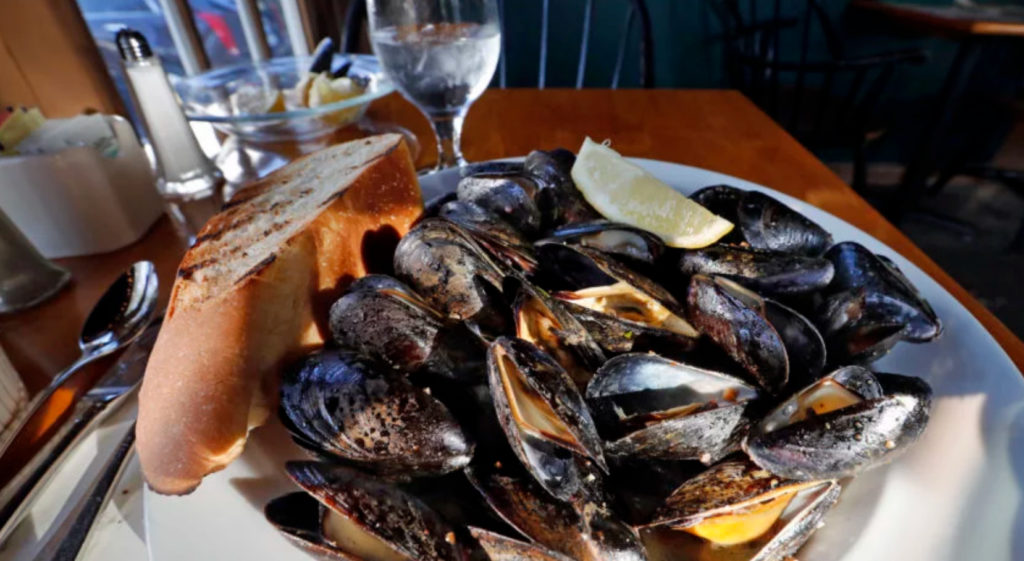By Patrick Whittle / AP
Maine mussels are losing their muscle. The state’s blue mussels are beloved by seafood fans near and far, but the size of the annual harvest has dipped in recent years, bottoming out at a 40-year low in 2016.
Harvesters collected less than 1.8 million pounds of mussel meat in 2016, the lowest total since 1976.
That year also marked the first time the state’s mussel harvesters topped a million pounds. They have exceeded 6 million pounds three times in the 1980s and 1990s, and routinely topped 3 million pounds until 10 years ago.
But by the early 2000s, a decline started that scientists and members of industry link to a variety of possible factors, while a solution has proven elusive.
Meanwhile, some harvesters have stopped bringing mussels ashore altogether because there simply aren’t as many to be had, said Carter Newell, a marine biologist and founder of Pemaquid Mussel Farms along the Maine coast.
“Some areas like Casco Bay, you just don’t see many mussels at all,” he said. “There’s sort of a general lack of real large population recruitment going on.”
One of the factors influencing the decline is shellfish poison events that necessitate harvesting closures, said Jeff Nichols, a spokesman for the state Department of Marine Resources.
There was such an event just last month. It involved the state shutting down shellfish harvesting in parts of its eastern coast because of a marine algae bloom that can carry a neurotoxin. Some 58,000 pounds of mussels had to be destroyed because of the biotoxin.
Other factors that could be impacting the mussels’ decline include the changing chemistry of the ocean to become more acidic, the growing population of invasive green crabs that eat shellfish, warming waters and the impact of human harvesting on the population, said Susie Arnold, a marine scientist with the Island Institute in Rockland, Maine.
Mussels are important for the marine environment in addition to being economically valuable, she said.
“Any shellfish that’s habitat is the seafloor, it creates habitat and structure for other important marine organisms,” Arnold said. “And mussels filter the water and improve water quality and clarity.”
Mussels can be farmed or harvested in the wild, and are produced both ways in Maine. Some 50 fishermen are licensed to harvest wild mussels in the state.
In 2015, Massachusetts surpassed Maine as the biggest blue mussel producing state in the U.S. They are also harvested in Washington state and in smaller amounts elsewhere along the East Coast.
The shellfish remain abundant in stores and restaurants, in part because they are farmed extensively in countries such as Canada and New Zealand, which are big importers to the U.S. And local mussels remain a fixture in Maine seafood markets.
But as local supplies diminish, prices may creep up. Harvesters received 23 cents per pound for Maine mussels at the dock last year — the highest price in state history according to records that go back to 1950. Such an increase will likely eventually be borne by the consumers.
Consumer demand is remaining strong, said Ralph Smith, owner of Moosabec Mussels, a harvester in Jonesport, Maine.
“There’s a good demand for it and it’s a very quality product,” he said.
read more


